Experiencing a tooth extraction can be daunting, but recovery doesn't have to be. Our guide on tips for faster recovery after tooth extraction focuses on the essential steps you need for a smooth and efficient healing process.
Whether it's managing discomfort or accelerating healing, we've got straightforward strategies tailored for you and your family to ensure a speedy return to your daily life in Cookstown and beyond.
1. Rest and Take It Easy
Rest reigns supreme in your journey to bounce back from a tooth extraction. This initial 24-48 hour window is your chance to hit the pause button and let nature do its thing. Avoid physical activities that could knock you off course. Your body uses this downtime to save energy for healing—essential for speeding up your recovery.
- Use those first two days to limit physical exertion like heavy lifting or exercise.
- Recline instead of lying flat to prevent additional swelling and throbbing.
The absence of stress on your body encourages a smoother recovery. Meanwhile, rest lessens the chances of complications. Discomfort is common immediately after extraction, but consistent rest lets your body settle, minimizes pain, and promotes rapid healing.
2. Monitor and Control Bleeding
Keeping a close watch on bleeding after an extraction isn't just smart—it's necessary. It ensures that healing happens on your schedule. Using gauze effectively is key. Insert and gently bite down to allow clot formation, a crucial step in recovery.
- Follow your dentist's guidance on changing gauze, usually every 30-45 minutes.
- Watch for signs of excessive bleeding—it could hint at underlying issues.
A solid blood clot acts like a barricade, protecting the wound while tissue and bone grow back stronger. Managing the initial bleeding ensures this clot stays put, forming the base for successful healing. Address any persistent issues promptly, knowing the team at Cookstown Dental Centre is always ready with expert guidance.
3. Apply Ice for Swelling Reduction
Ice: the unsung hero in knocking down swelling and pain. Tackling these immediate post-extraction challenges head-on is simple with a bit of cold treatment. An ice pack on your cheek can reduce inflammation and discomfort significantly.
- Embrace the 20 minutes on, 20 minutes off protocol during the first day.
- Use a cloth between the ice and your skin to avoid frostbite.
The science is straightforward—cold constricts blood vessels. Lesser swelling and less inflammation mean even those sore spots get a breather. Reduced bruising is a bonus, and icing early and often keeps pain in check. It's a cool approach that helps you focus on recovery without unnecessary setbacks.
Tip: Consistent icing during the first 24 hours harnesses its full potential.
4. Avoid Smoking and Alcohol
Kicking smoking and alcohol to the curb after an extraction isn’t just advised—it’s essential. These habits disrupt the healing process, increasing the chance of dry socket, a startlingly painful condition you want to avoid.
- Smoking cuts down your blood's oxygen supply, prolonging healing.
- Alcohol can react badly with any post-surgery medication.
The temptations might be strong, but consider the alternative: smooth, uncomplicated recovery. This proactive measure gives your mouth the optimal environment it needs to regenerate effectively. Making the right choice here compounds in benefit—you feel better, heal faster, and honestly, it might be the perfect reason to quit or cut back for good.
5. Stick to a Soft Food Diet
Your dining experience transforms post-extraction—and for a good reason. A soft food diet acts like a cushion for your healing process. It's a strategic choice, keeping disruptions at bay and pain points away.
- Lean into soft foods like yogurt, applesauce, and mashed potatoes.
- Stay clear of tough, chewy, or spicy foods—they’ll only irritate your extraction site.
These adaptable food choices give you the nutrients essential for repairing tissue while safeguarding the vulnerable area. Besides giving your healing mouth a needed rest, this dietary shift opens a door to creativity in your meals, ensuring you nourish without risking setbacks.
6. Maintain Oral Hygiene Carefully
Staying aware is your new path to cleanliness post-extraction. Yes, keep up your oral hygiene—but do it cautiously to avoid jostling the healing site. For now, gentle rinses are your best friend.
- Avoid brushing directly over the extraction area for a few days.
- Warm saltwater rinses offer gentle cleaning power without irritation.
Saltwater, loved for its anti-bacterial qualities, ensures your mouth stays fresh and fights infection. Your goal: to steer clear of harsh movements or alcohol-based mouthwashes that disturb the healing area. This careful approach not just safeguards your wound but sets up a healthy foundation for the future.
7. Use Medications as Directed
Medications, when taken as directed, become your best silent supporters. They manage discomfort and make recovery a smoother ride. Pain is manageable if you follow the scheduled regimen to the letter.
- Stick to the pain medication routine prescribed by your dentist.
- Antibiotics, when provided, are crucial to avoid infections.
Regular medication does more than ease pain—it reinforces your body's resilience. This allows each step towards recovery to feel less of a chore and more like progress. Use reminders or alarms to stay on track, ensuring pain relief doesn’t skip a beat.
8. Stay Hydrated
Hydration is a cornerstone of healing. After an extraction, your body craves fluids to maintain optimal function and accelerate recovery. Water helps flush toxins, supports circulation, and keeps the mucous membranes moist.
- Drink plenty of water but avoid straws to prevent disrupting the clot with unwanted suction.
- Steer clear of caffeinated beverages that might dehydrate you.
Staying hydrated means more than just drinking any liquid—it’s about nourishing your body to aid in healing. Flush toxins out efficiently, ensuring your tissues stay healthy and resilient. You'll find hydration brings comfort, reduces infection risks, and promotes quicker healing.
9. Recognize Signs of Complications
Knowledge empowers you to recognize when something isn’t right. Being aware of complication signals can make all the difference. Identify these before they turn more serious.
- Watch for persistent bleeding or severe pain.
- Keep an eye on fever, swelling, or unusual discharge.
Stay alert—you’re at the forefront of your care. If any red flags arise, reach out for professional guidance promptly. Quick action helps prevent setbacks, putting you back on the fast track to recovery. At Cookstown Dental Centre, we're ready to answer questions and offer reassurance every step of the way.
10. Keep Your Head Elevated
Elevating your head aids in reducing swelling and pressure—both benefiting healing. It prevents blood from pooling in the extraction site, promoting quicker recovery.
- Use an extra pillow or a reclining chair to rest comfortably.
- Aim to keep your head above heart level, especially while sleeping.
This small adjustment has big effects. Comfort pairs with faster healing to help you feel closer to normal. Something as effortless as resting in a reclined position boosts circulation, minimizing discomfort while allowing tissues to recover smoothly.
11. Utilize Hot Compresses After 48 Hours
Once swelling decreases, it’s time to bring warmth into the mix. Warm compresses enhance circulation and reduce residual pain.
- Apply a gentle heat source like a warm towel or rice-filled sock.
- Repeat several times a day to soothe and relax the area.
Warmth works wonders post-initial healing phase, making those tight muscles ease up around the extraction site. This added comfort is not just about alleviating stiffness; it enhances blood flow, ensuring nutrients reach the area efficiently for continued healing.
Take note: Proper timing between cold and hot compresses maximizes their effects.
12. Avoid Excessive Mouth Rinsing
Balance is key to oral hygiene post-extraction. It is crucial to keep the mouth clean, but over-rinsing can be counterproductive. Retain that clot with gentle care.
- Lightly rinse with a saltwater solution after the first 24 hours.
- Limit to twice a day, avoiding vigorous swishing.
Overdoing it poses a risk—the clot may dislodge, leading to extended healing. Consistent but gentle rinsing strengthens your defenses while safeguarding the wound. Simplicity and caution are your best allies in passively attending to dental care during your recovery.
13. Plan Your Meals and Medications
Strategizing meal and medication timings can significantly enhance comfort and recovery efficiency. Align them for balance, ensuring seamless healing.
- Take medication with softer meals to avoid upsetting your stomach.
- Allow sufficient time between eating and dosing for better absorption.
This harmony simplifies your recovery ecology—nutrients and medicines work in tandem for best support. Over time, these small yet pivotal adjustments build a smoother healing process, making every intake purposeful.
Conclusion
Your recovery journey after tooth extraction doesn’t have to be uphill. By following these practical steps, you prioritize healing and well-being, ensuring faster recovery and less discomfort. Rest assured in knowing each choice supports a return to normalcy. With guidance from Cookstown Dental Centre, we're here to empower every step of your oral health journey—making recovery as effortless as possible.

